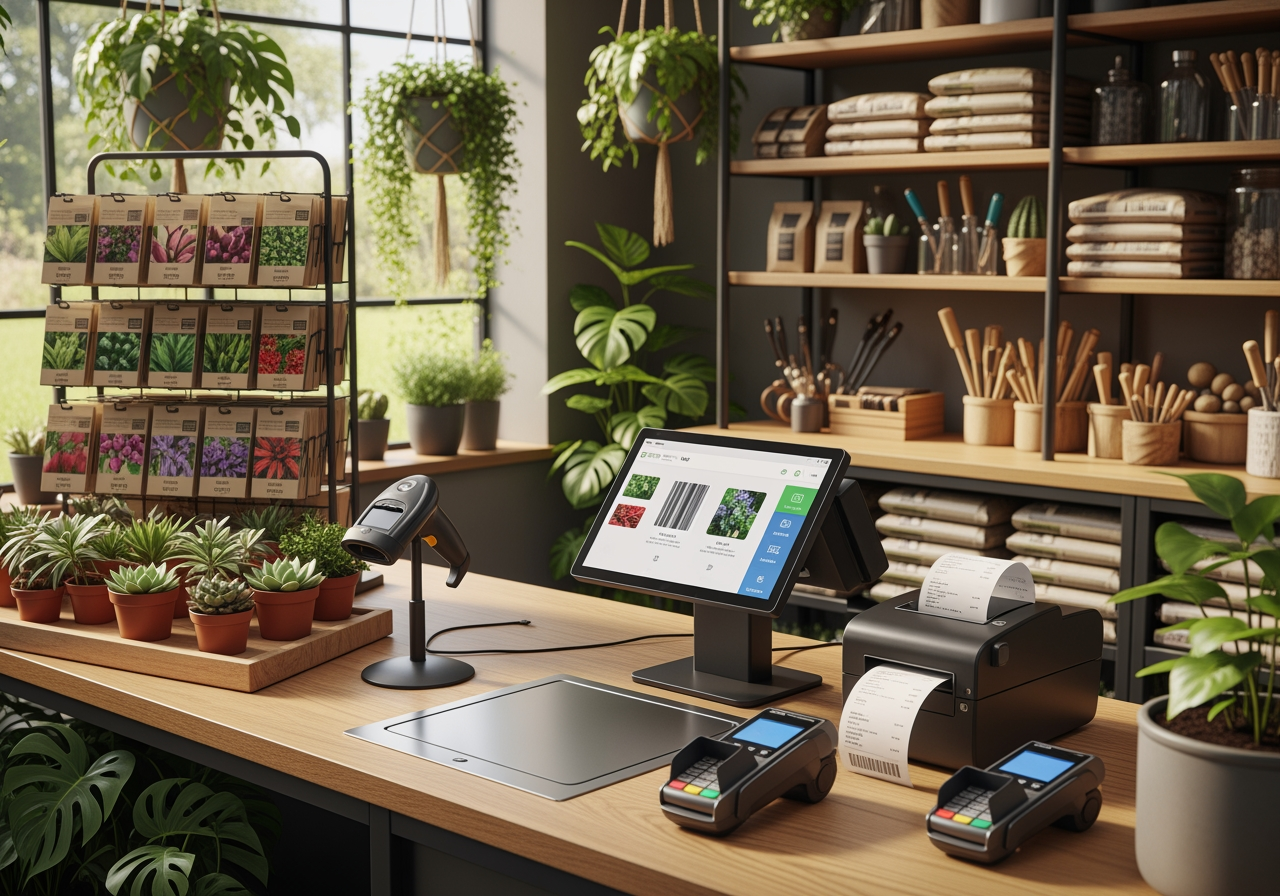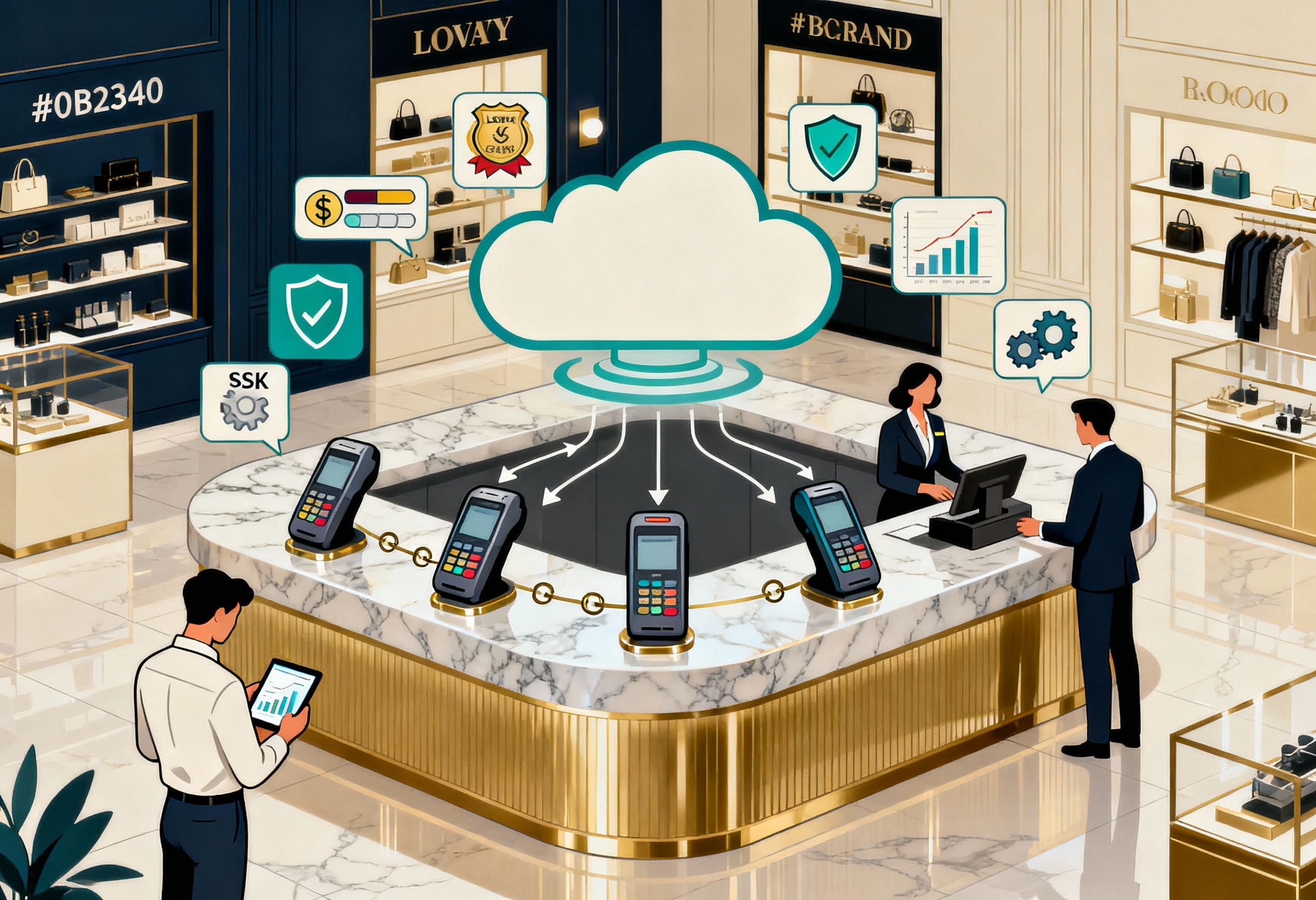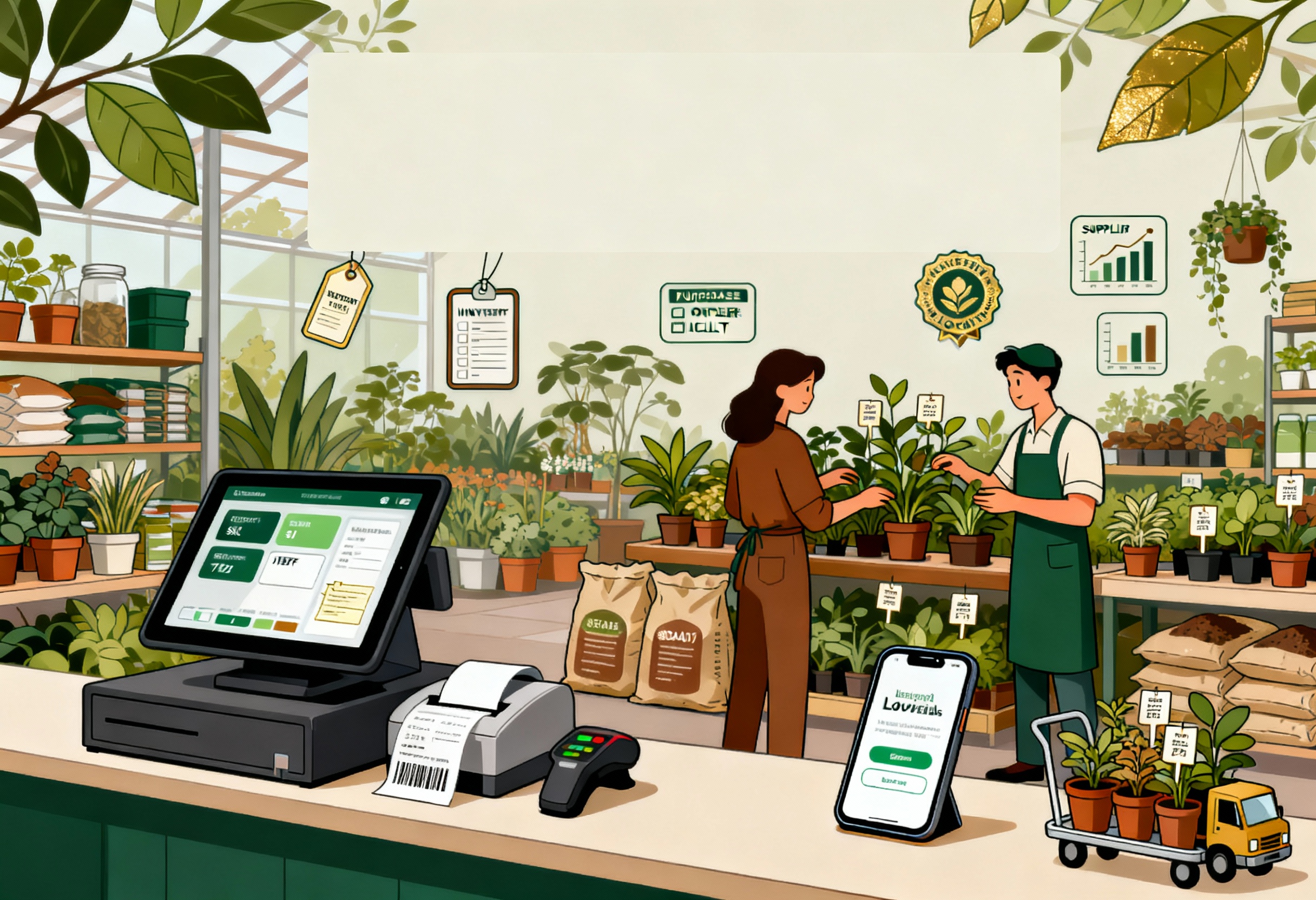Customer service in 2025 continues to evolve at speed, shaped by smarter systems and rising customer expectations. Technologies like self service kiosk POS, generative AI, and real-time personalization are becoming embedded in daily operations. Businesses are shifting toward tools that blend automation with human insight, creating faster, more connected interactions across every touchpoint. Below is a closer look at the key trends driving this transformation.
Technology In Customer Service Trends 2025
89% of companies acknowledge that maintaining excellent customer service is crucial for retaining customers (Semrush). Therefore, it is essential to stay updated on these trends to consistently meet customer expectations and ensure their satisfaction.

From self service kiosk POS systems to automation and AI, businesses are embracing innovative trends to revolutionize the customer experience like never before. Let’s explore the exciting advancements shaping the future of customer service:
AI-Powered Autonomous Self Service Kiosk POS
Self service kiosk POS systems now include AI features that guide customers with greater accuracy and personalization. Kiosks, apps, and knowledge bases are becoming more responsive.
- Interfaces adjust based on previous behavior or current selections.
- Predictive prompts suggest next steps or flag possible issues before they occur.
- Visual walkthroughs or FAQs adapt based on customer data and product types.
These tools reduce wait times and improve issue resolution without extra staff involvement.
The Generative AI & Digital Agent Revolution
Over the last four years, the adoption of AI has increased by 270% (Gartner), with 37% of businesses now incorporating some form of artificial intelligence into their operations.
Generative AI is moving into daily service operations. Companies are deploying digital agents that handle multi-step tasks, retrieve information across systems, and respond with greater context.
- These agents process natural language to understand intent and guide customers through complex issues.
- AI-generated content supports customer replies, product documentation, and internal knowledge sharing.
- Businesses are integrating GenAI to reduce manual workload and maintain faster response times.
This evolution gives support teams more time to focus on critical, high-impact conversations.
Proactive Support: The New Customer Expectation
Customers expect companies to anticipate issues and address them before a complaint is filed. Predictive models and usage tracking make this possible.
- Systems detect unusual activity, delays, or errors and trigger automatic follow-ups or alerts.
- Support teams receive early warnings to intervene before problems escalate.
- Customers receive updates or advice at the right moment, without needing to reach out.
Proactive support increases trust while reducing service volume.
►►► Optimal solution set for businesses: Multi store POS, Next-gen POS, Inventory Management Software (MSI), Self Service, Automation, Backorders
Hyper-Personalization and Real-Time Journey Crafting
Service interactions are shifting toward real-time, data-driven personalization. Each customer touchpoint now reflects current behavior and preferences.
- AI tracks browsing patterns, purchase history, and engagement across channels to tailor product suggestions and support content.
- Responses adjust instantly as customer behavior changes, creating a responsive and dynamic experience.
- Personalization now reaches across channels, including chat, email, in-store, and mobile.
Every interaction builds on the last, reducing friction and increasing relevance.
Seamless Omnichannel to Unified CX
Customers often switch between channels during a support journey. Unified CX keeps the context consistent as conversations move between platforms and teams.
- Customer profiles retain interaction history across chat, email, phone, and in-person visits.
- AI tools summarize past messages to give agents quick context.
- Transitions between bots and agents stay smooth, with no repeat questions or lost details.
This approach builds a cohesive experience regardless of how or where customers engage.
The Blended Human & AI Workforce
AI is reshaping agent roles by taking over routine tasks and supporting decision-making. Human teams now focus on complex or emotional conversations.
- AI co-pilots suggest replies, surface helpful data, and summarize interactions in real time.
- Training programs help agents interpret AI insights and decide when to take over.
- Staff are equipped to handle sensitive topics, while AI handles repetition and speed.
This model improves both efficiency and customer satisfaction across service tiers.
Voice-Based CX and Emotional AI
Voice remains a key channel, especially when paired with emotional intelligence. AI now analyzes tone, pitch, and pacing to detect frustration or urgency.
- Sentiment detection improves call routing and agent preparation.
- Voice bots adapt their responses based on emotional signals.
- Live calls benefit from AI coaching that helps agents adjust tone and phrasing.
These tools support faster resolution and more empathetic conversations.
Immersive Experiences: AR/VR for Next-Gen Support
AR and VR are gaining traction in service environments that require visual guidance or real-time setup.
- AR overlays help customers troubleshoot hardware or assemble products.
- VR environments offer onboarding, product tours, or remote training.
- Support teams use AR-assisted video to walk customers through steps during a call.
These tools reduce resolution time and improve clarity for complex support needs.
Video and Co-Browsing for High-Touch Resolution
Live video and co-browsing create a direct, guided experience for customers who need more detailed support.
- Agents can view customer screens to walk through forms, settings, or features.
- Video calls build trust and improve clarity during escalations or sensitive discussions.
- Tools include screen annotation and secure access to guide users without compromising privacy.
This method improves resolution for high-value customers or complex cases.
How Can Self Service Kiosk POS From ConnectPOS Keep Up With Customer Service Trends?
ConnectPOS can keep up with customer service trends by adopting and integrating various strategies especially self service kiosk POS that align with the evolving needs and preferences of customers.
1. Standout in the Market by Boosting Satisfaction and Loyalty
ConnectPOS positions itself as a market leader by prioritizing customer satisfaction and fostering loyalty. The integration of a self-service POS system is a pivotal strategy that reduces wait times and minimizes frustration. The accessibility of these kiosks 24/7 ensures an uninterrupted and efficient customer flow, resulting in an elevated shopping experience that leaves a lasting positive impression.
Serving as a versatile solution, ConnectPOS caters to a broad spectrum of businesses without necessitating significant infrastructure changes. This adaptability ensures that ConnectPOS remains a viable and valuable option for businesses of varying sizes and industries, reinforcing its position as a leader in the market.
The commitment to high-quality data collection adds another layer to ConnectPOS’s competitive edge. By gathering valuable insights into customer behavior and preferences, businesses using ConnectPOS can make informed decisions. The automated data entry and processing capabilities significantly reduce the risk of human error, enhancing the accuracy and reliability of the collected data.
2. Enhance Transparency and Convenience with Real-time Sync
Self service kiosk POS from ConnectPOS goes beyond conventional transaction processing by prioritizing transparency and convenience. The real-time synchronization feature ensures that customers are provided with live pricing, promotions, and detailed product information. This dynamic and engaging shopping experience enhances customer satisfaction, fostering a positive perception of the brand.
Effortless scanning capabilities further contribute to the convenience factor. Customers can easily scan barcodes or QR codes using the device’s camera or a dedicated scanner, streamlining the checkout process. This not only saves time but also enhances the overall efficiency of the transaction, creating a seamless and enjoyable customer journey.
Enhanced security is a key pillar in ConnectPOS’s approach to customer service. By providing a variety of secured payment options and ensuring an immediate logout after payment, ConnectPOS prioritizes the safety of customer data. This commitment to security not only builds trust but also contributes to a secure and trustworthy shopping environment.
3. Next-Gen Features Elevate In-Store Experiences
ConnectPOS revolutionizes in-store experiences with innovative features. Digital receipts, stored in the app, promote sustainability by eliminating paper usage. ConnectPOS offers seamless multi-device compatibility for a consistent shopping experience across kiosks, tablets, smartphones, and desktops.
The platform goes beyond transactional capabilities by offering comprehensive reporting and analytics. Businesses leveraging ConnectPOS gain access to detailed sales reports, analytics, and performance metrics. Utilizing a data-driven approach empowers businesses to make informed decisions, streamline operations, and consistently improve overall performance.
In summary, ConnectPOS not only keeps pace with customer service trends through the integration of self-service kiosk POS systems but also sets a new standard by offering a feature-rich, adaptable, and customer-centric solution.
By embracing innovation and focusing on the evolving needs of both businesses and consumers, ConnectPOS stands out as a leader in the retail landscape, providing a competitive edge in an ever-changing market.
FAQs About Self Service Kiosk POS And Other Trends
Let’s explore our FAQs about Self-Service Kiosks POS and other trends shaping customer service.
- What Are Self-Service Kiosks POS And How Do They Redefine Customer Service?
Self service kiosk POS revolutionize customer service by providing an interactive, automated platform for customers to independently engage in transactions. Discover how these kiosks enhance efficiency and convenience for both businesses and customers.
- What Industries Are Adopting Self-Service Kiosks POS?
Various industries, including retail, hospitality, fast-food, and healthcare, are adopting self-service kiosks POS. These systems are versatile and can be customized to meet the specific needs of different businesses.
- What Role Do Self-Service Kiosk POS Systems Play In Enhancing Customer Experiences?
Self service kiosk POS systems empower customers to take control of their shopping experience, reducing wait times and offering convenience. By allowing customers to browse products, place orders, and complete transactions independently, these systems enhance efficiency and streamline operations, ultimately leading to improved customer satisfaction.
- How Are Businesses Using Technology For Personalized Experiences In Customer Service?
Businesses leverage technology, such as AI-driven algorithms and data analytics, to personalize customer experiences. From personalized product recommendations to customized communication channels, businesses tailor interactions to align with individual preferences and interests, thereby enhancing customer satisfaction and loyalty.
- Are There Specific Tools Or Technologies Driving These Customer Service Trends?
Yes, various tools and technologies are driving these customer service trends, including AI-driven chatbots, virtual assistants, omnichannel support systems, and self service kiosk POS systems. These technologies enable businesses to offer seamless and personalized experiences across multiple channels, meeting customers’ evolving expectations.
- How Do Businesses Balance Technology And A Human Touch In Customer Interactions?
Businesses strive to strike a balance between technology and human touch by integrating automation with personalized human interaction. While technology streamlines processes and enhances efficiency, human interaction adds warmth and empathy to customer interactions, fostering deeper connections and trust.
- How Can Companies Prepare Their Workforce For The Evolving Customer Service Technology Landscape In 2025?
Companies can prepare their workforce for the evolving customer service technology landscape by investing in comprehensive training programs. These programs should focus on familiarizing employees with new technologies, teaching them how to leverage data insights, and honing their interpersonal skills to ensure seamless integration of technology with a human touch.
Conclusion
Customer service in 2025 reflects a clear shift toward intelligent, connected, and predictive experiences. Trends like self service kiosk POS, AI-powered personalization, and unified customer support are changing how businesses interact with their customers – making service faster, more relevant, and easier to access. These tools are no longer optional; they’re becoming a core part of how companies compete and build loyalty.
If you wish to explore more about self service kiosk POS systems, reach out to us – we’re always ready to explore your inquiries!
►►► Optimal solution set for businesses: Shopify POS, Magento POS, BigCommerce POS, WooCommerce POS, NetSuite POS, E-Commerce POS



